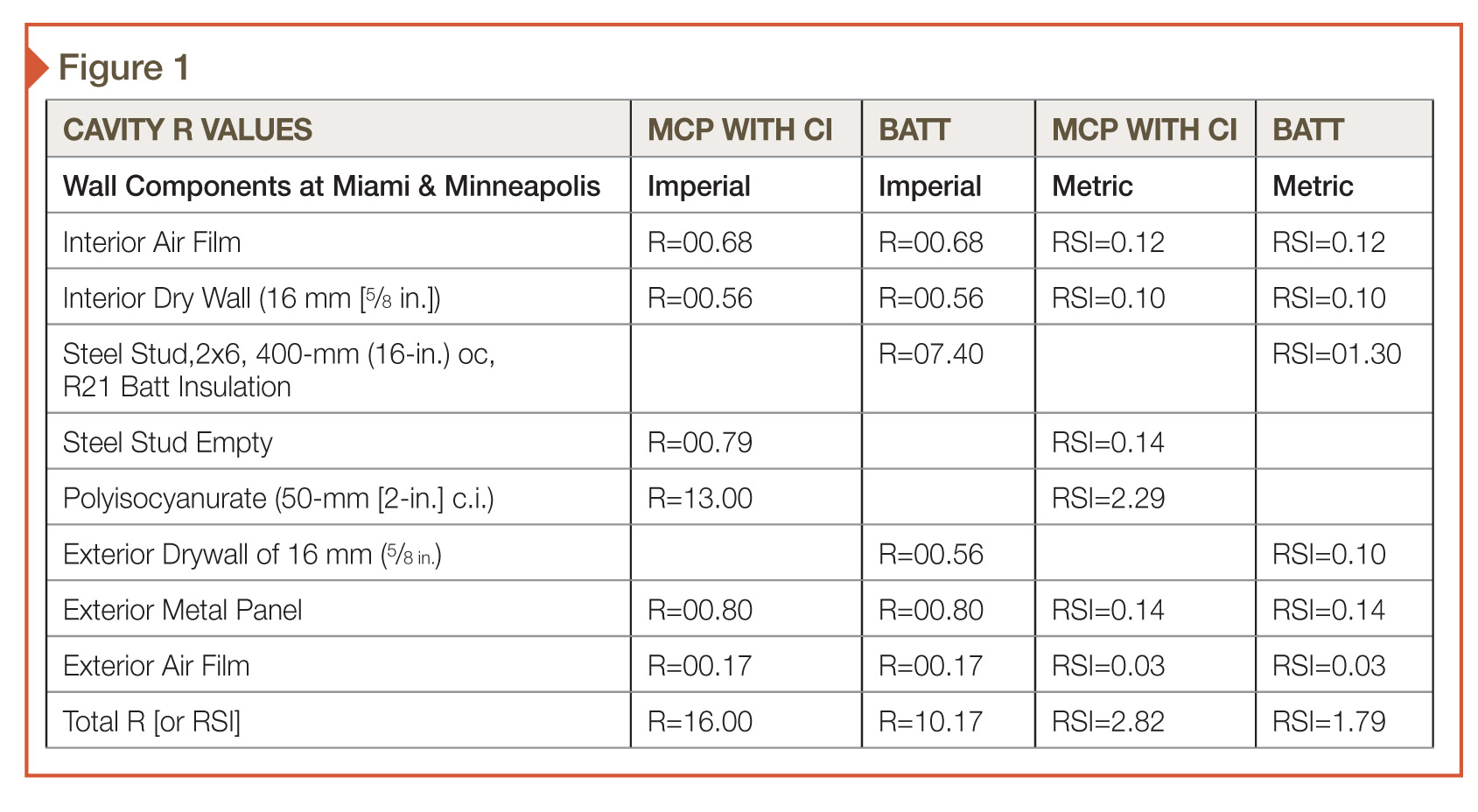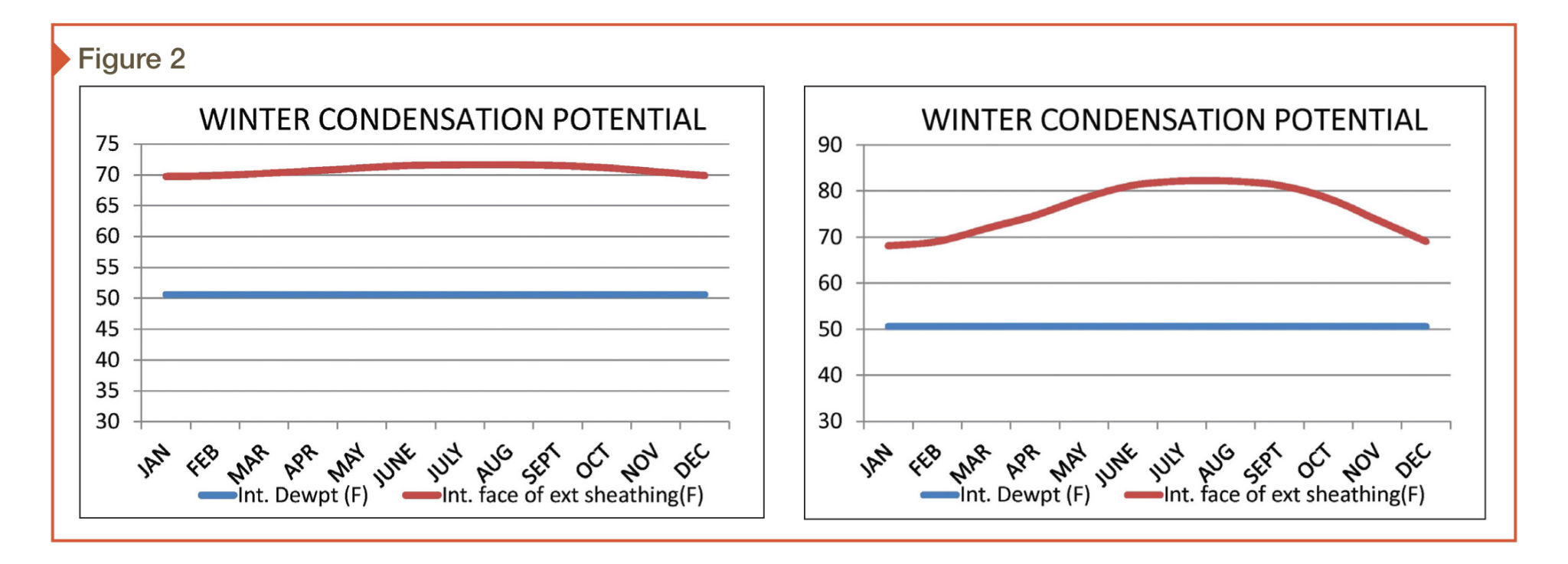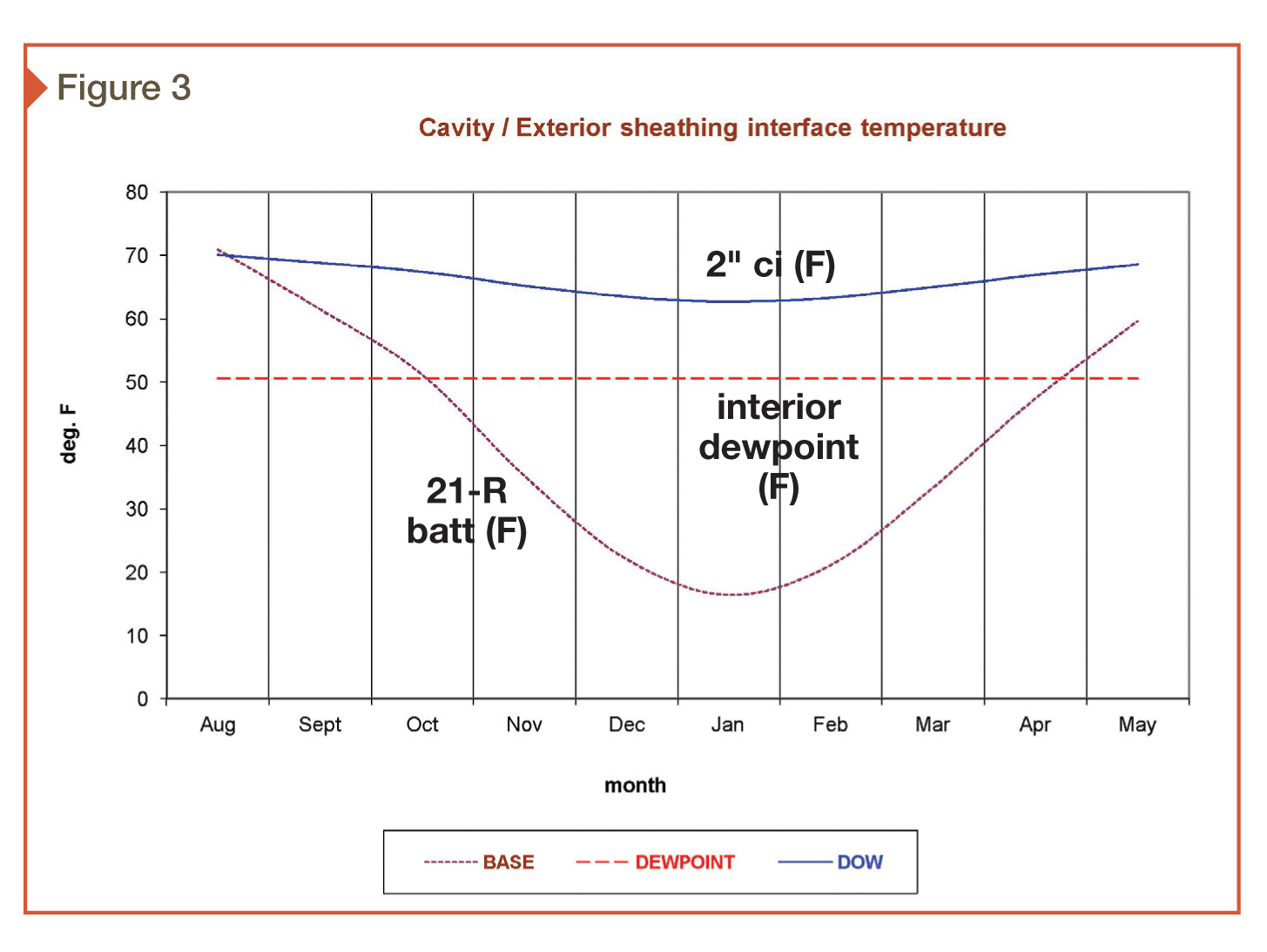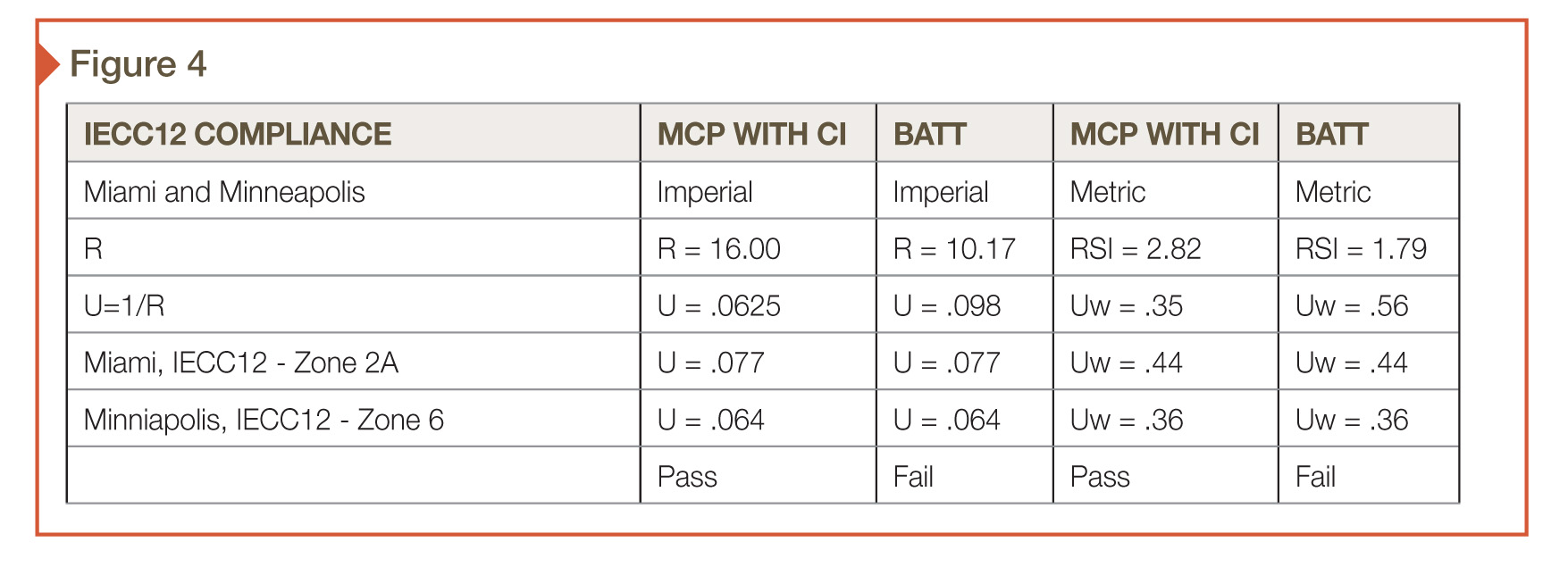
Figure 1 compares wall cavity R-values for two extremes, Miami and Minneapolis. It assumes an interior of 21 C (70 F), 50 percent relative humidity (RH), 50 x 152-mm (2 x 6-in.) steel studs at 41 mm (16 in.) o.c. Using the parallel path method, a comparison is made between an MCP system with 50-mm (2-in.) polyiso ci versus R-21 batt insulation.
In Miami (Figure 2), the winter, exterior, moist air is restrained from infiltration by the ci’s impermeable foil with cavity temperature maintained by the continuous insulation as a constant over the dewpoint temperature. Batt insulation also maintains cavity temperature over dewpoint with higher surface temperature than ci.

In Minneapolis, the winter cavity temperature (Figure 3) is maintained by the ci above the dewpoint temperature, but batt insulation allows the cavity temperature to fall below the dewpoint during the winter, enabling condensation to occur.

The thermal comparison of Miami versus Minneapolis continues in Figure 4 by examining compliance with the 2012 edition of the International Energy Conservation Code (IECC). The conclusion is MCPs on steel studs with 50 mm (2 in.) of polyiso ci complies with that code, but steel studs with R-21 batt insulation cannot, for either Miami or Minneapolis.






This is interesting information about the MCM vulnerabilities with regard to high winds. It seems like the new IBC has made a good change for safety. There are a lot of storms where I live, so the hooks and insulation would be a great idea. Thanks for sharing.